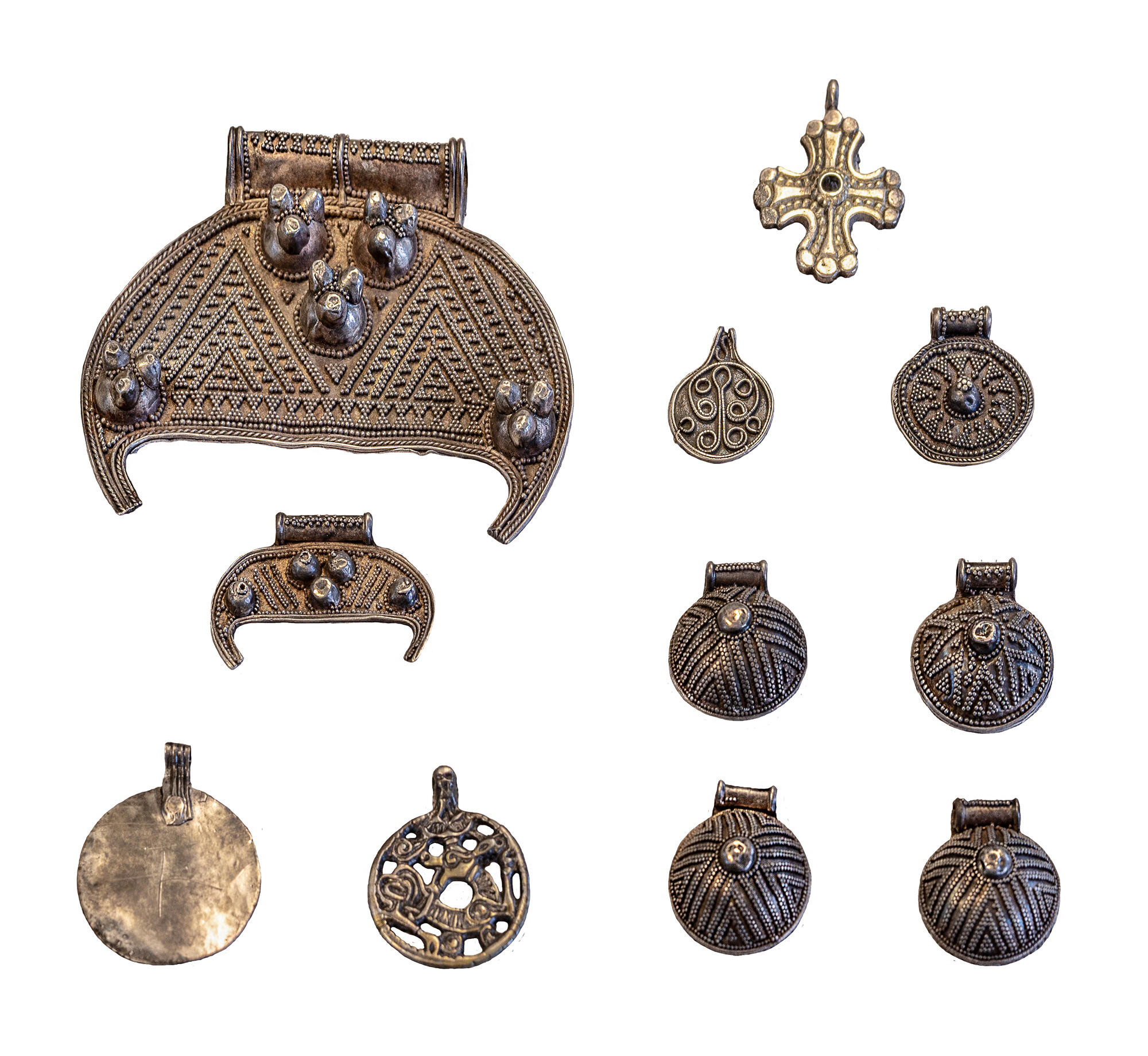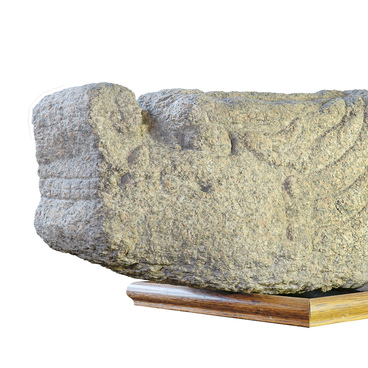The 10th century hoard of coins and objects was discovered during excavations at the eastern settlement (“selische” in Russian, that is, an undefended settlement) of the Gnezdovo archaeological site. It is located 13 kilometers from modern Smolensk. The treasure includes 395 items: silver jewelry for women (earrings, temple rings, lunula pendants, buttons, beads, pendants of various shapes), weights for measuring silver, Arabic coins-dirhams. The hoard was hidden in a purposefully dug hole under a corner of a residential building.
Archaeologists have suggested that the items were once hidden deliberately: they were tightly packed and probably wrapped in birch bark, from which only a few scraps have survived. Preserved leather fragments were also unearthed — scientists have suggested that these are remains of a bag. A knife was stuck into the bundle, from which, over time, only the lower part of the blade remained. It could have served as a talisman.
It is not known who exactly hid the treasure and why. It was buried within the area of a house, and not in a kurgan (a type of tumulus constructed over a grave) or a sanctuary: it means that the objects had no ritual significance. All items are finished products; no broken jewelry pieces for melting, ingots, or wire were found there. Consequently, it could not be a stock of raw materials either. According to scientists, the jewelry and money were hidden due to some kind of danger — for example, an enemy raid. Most likely, the owner intended to pick them up later, but did not manage to do it.
At the site of the Gnezdovo archaeological site, where the treasure was found, an early urban center was located during the formation of Kievan Rus. It was formed on the stretch of the famous trade route “from the Varangians to the Greeks”. According to researchers, it was inhabited by merchants who were engaged in long distance and local trade, artisans, farmers and well-armed warriors, mostly of Scandinavian origin: they were the aristocratic elite of the Gnezdovo society.
Archaeologists have suggested that the items were once hidden deliberately: they were tightly packed and probably wrapped in birch bark, from which only a few scraps have survived. Preserved leather fragments were also unearthed — scientists have suggested that these are remains of a bag. A knife was stuck into the bundle, from which, over time, only the lower part of the blade remained. It could have served as a talisman.
It is not known who exactly hid the treasure and why. It was buried within the area of a house, and not in a kurgan (a type of tumulus constructed over a grave) or a sanctuary: it means that the objects had no ritual significance. All items are finished products; no broken jewelry pieces for melting, ingots, or wire were found there. Consequently, it could not be a stock of raw materials either. According to scientists, the jewelry and money were hidden due to some kind of danger — for example, an enemy raid. Most likely, the owner intended to pick them up later, but did not manage to do it.
At the site of the Gnezdovo archaeological site, where the treasure was found, an early urban center was located during the formation of Kievan Rus. It was formed on the stretch of the famous trade route “from the Varangians to the Greeks”. According to researchers, it was inhabited by merchants who were engaged in long distance and local trade, artisans, farmers and well-armed warriors, mostly of Scandinavian origin: they were the aristocratic elite of the Gnezdovo society.



